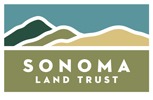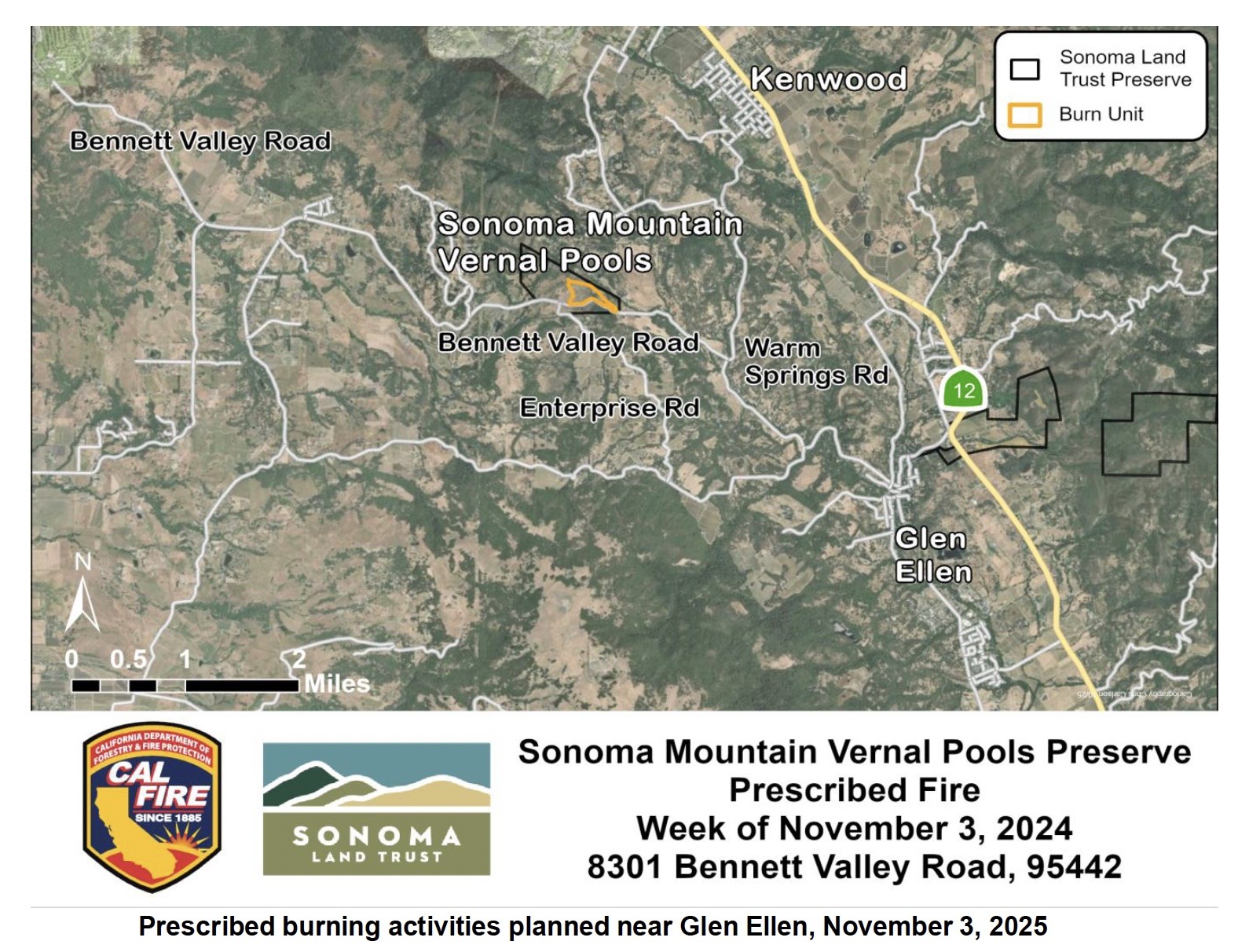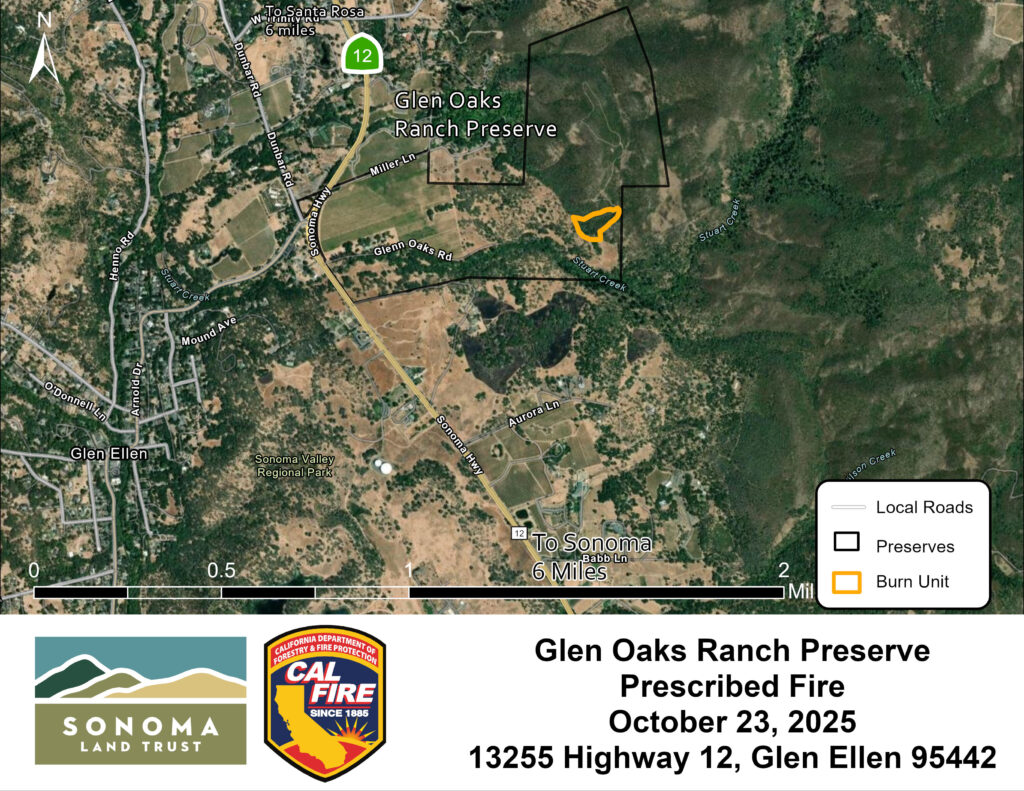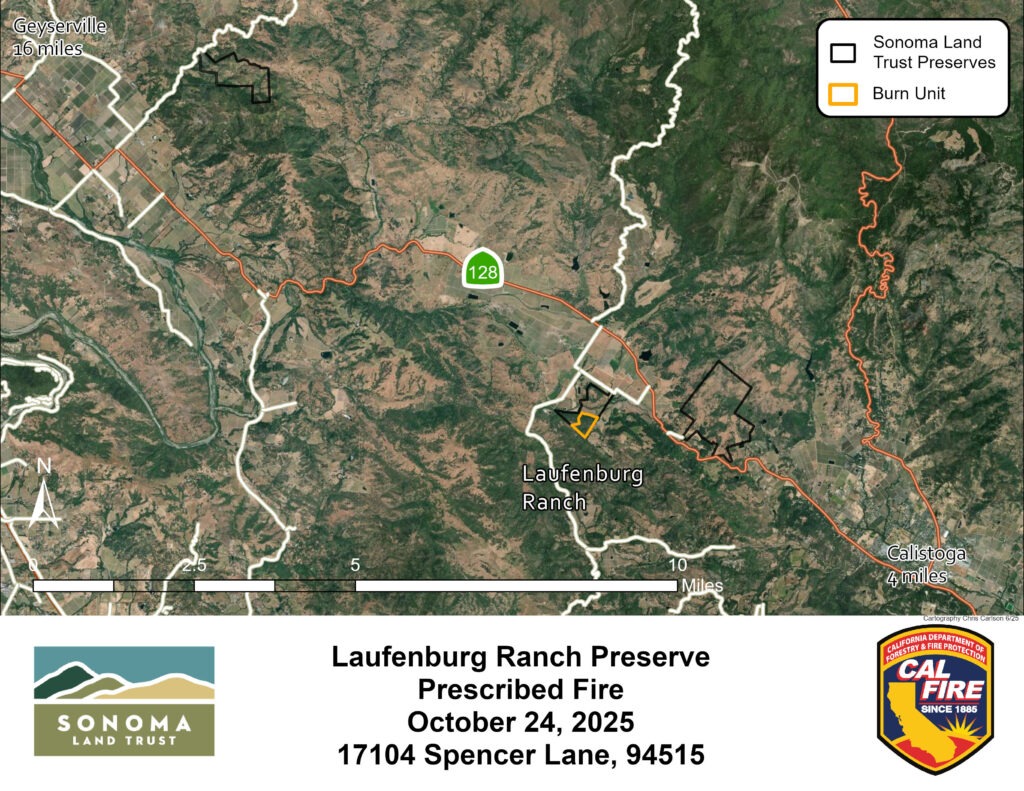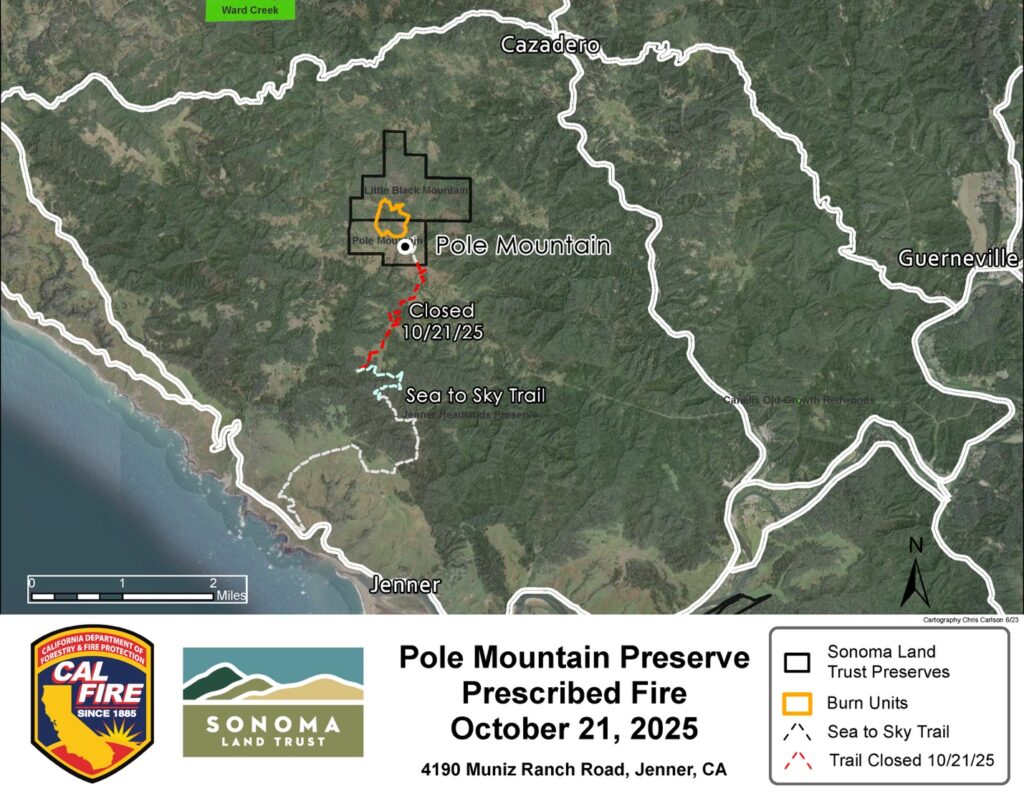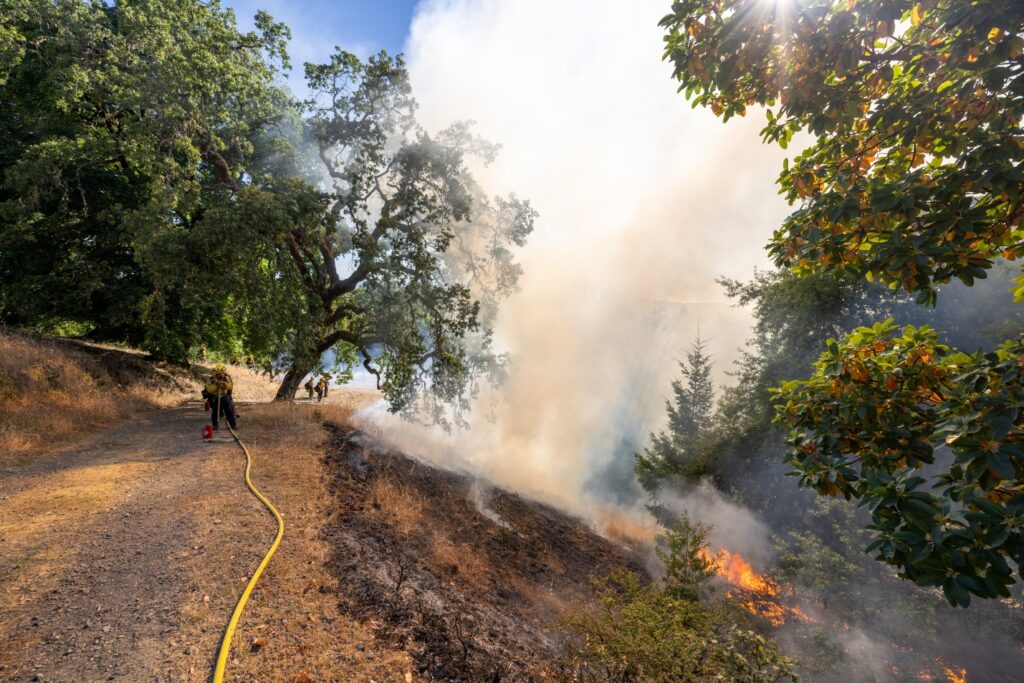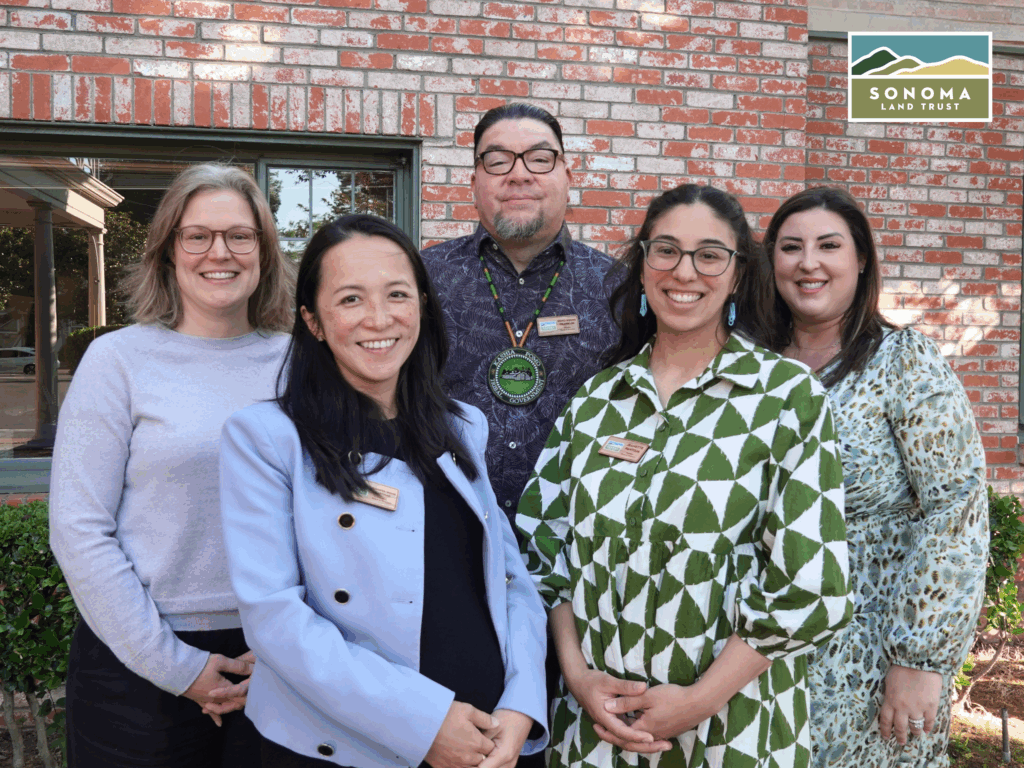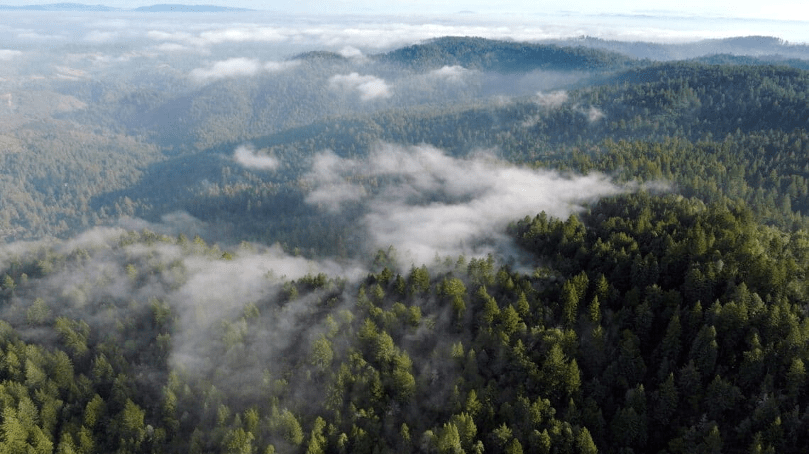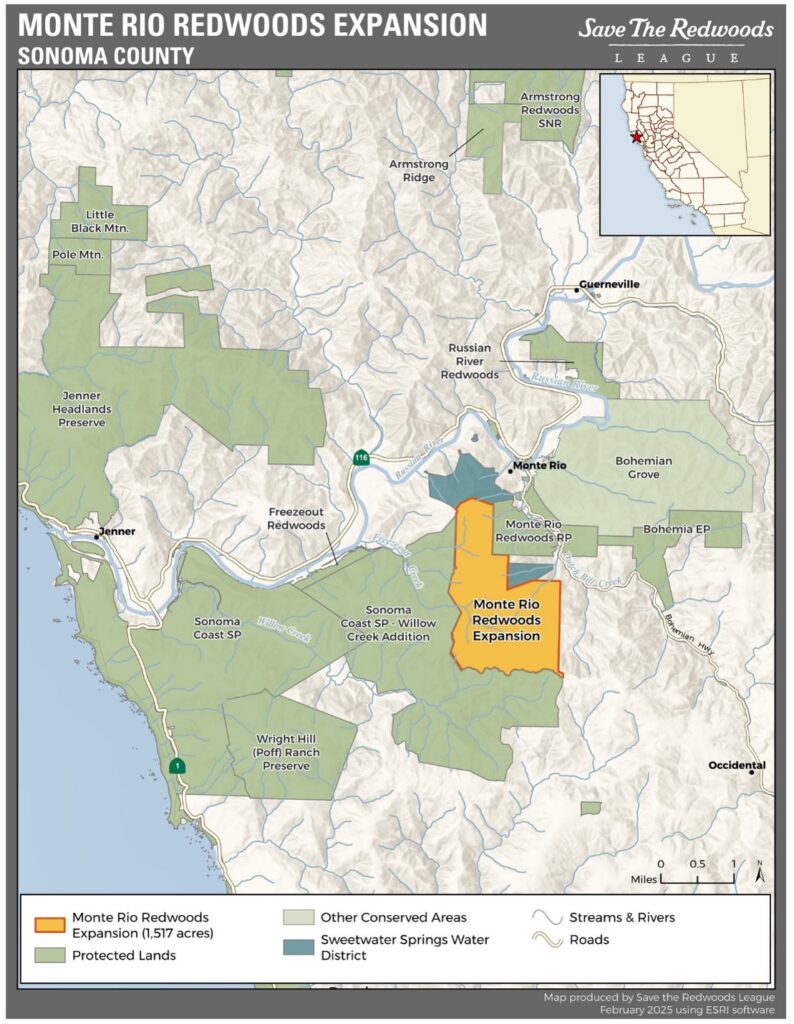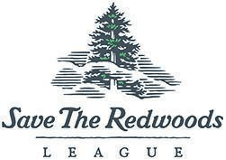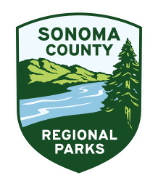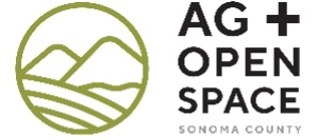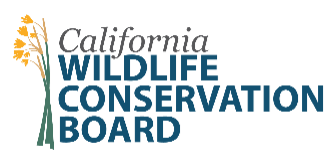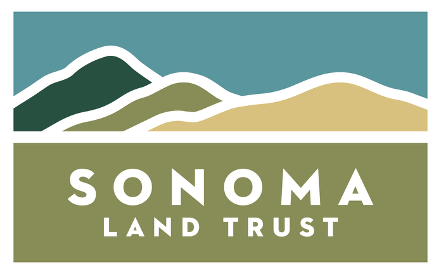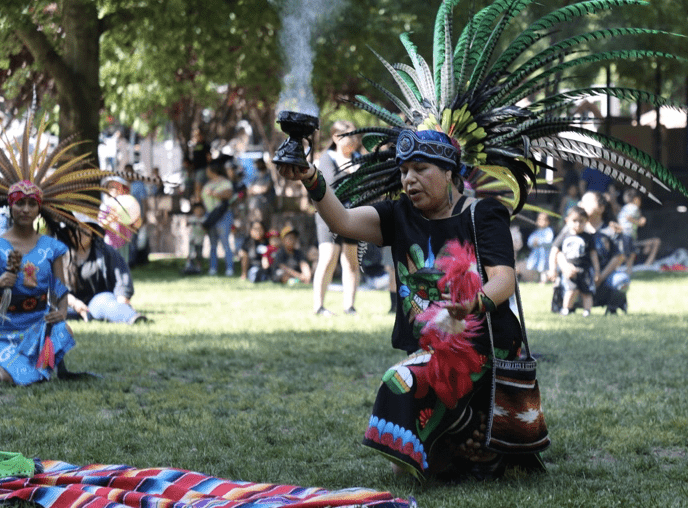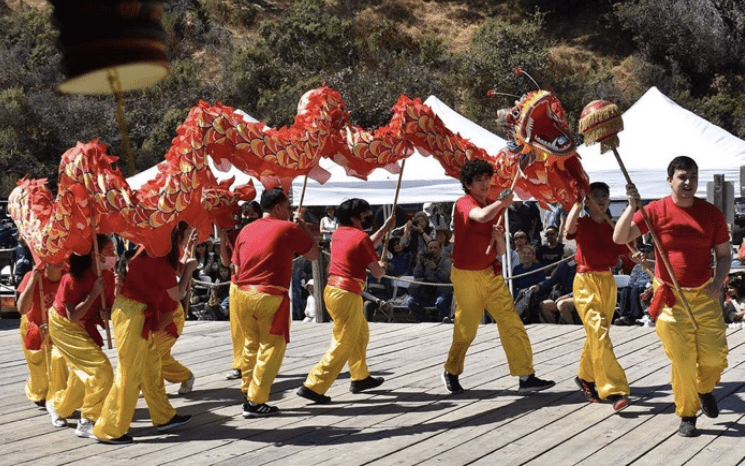Press Release
November 8, 2022– Glen Ellen, CA – Sonoma Land Trust and All Hands Ecology announced plans to conduct a 32-acre prescribed burn at the Glen Oaks Ranch near Glen Ellen California, on Thursday, November 10. The burn will be led by All Hands Ecology’s Fire Forward program in partnership with Sonoma Land Trust to restore forest health and resilience to future wildfire. Residents may see or smell smoke from the burn area east of Highway 12 in Glen Ellen and are advised to refrain from calling 911.
*This controlled burn is subject to change depending on conditions.
Glen Oaks Ranch is located on Highway 12, near Arnold Drive in Glen Ellen. The anticipated time for the prescribed burn is 11:00 a.m. through 5:00 p.m. The burn will be conducted by prescribed fire managers from All Hands Ecology’s Fire Forward program, with support from Sonoma Land Trust staff, the Good Fire Alliance, the Sonoma Valley Wildfire Collaborative , CAL FIRE, and Sonoma Valley Fire and Rescue Authority. Crews will continue to monitor the site throughout the evening and following days to ensure that the fire has been fully extinguished. Weather conditions and safety protocols are critical to this effort and if for any reason the burn can’t be conducted safely, the project will be postponed.
————-
**Smoke and Traffic Advisory**
The prescribed burn will commence as early as 9:00 a.m. and conclude around 5:00 p.m. Smoke and flames will be visible east of Highway 12 near Glen Ellen throughout the day. This is a permitted prescribed burn; do not call 911.
—————
Restoring forest health and wildfire resilience in oak woodlands
Sonoma Land Trust’s 234-acre Glen Oaks Ranch Preserve is located on the ancestral lands of Coast Miwok and Southern Pomo people. For thousands of years, Indigenous fire management practices included the use of low-intensity fire every few years in oak woodlands to improve the productivity of the land for food, fiber, and medicines, as well as insurance against wildfire. The preserve is critical habitat for hundreds of native plant and animal species and is an important link in the Sonoma Valley Wildlife Corridor – a network of protected lands that allows wildlife to move between the Mayacamas and Sonoma Mountain.
A total of 32 acres are scheduled for prescribed burning as a part of this project. The area consists of oak woodland with an understory of grass and sparse shrubs. The area was impacted by high-intensity wildfire in 2017 – the first fire in 60 years, which damaged or killed many mature trees.
Oak woodlands are healthiest when they experience frequent, low-intensity fires that clear away competing brush, conifers, and grass thatch. Without this periodic “good fire,” oak forests are at higher risk of harm from wildfire. In the absence of fire, fuels accumulate and get denser over time, which can lead to high-intensity wildfire.
Low-intensity prescribed burns also make oak forests healthier and more resilient to climate change – good fire creates space for new generations of plants, increases nutrient and water availability, and stabilizes carbon on the ground. Finally, prescribed burning can improve community safety if conducted near communities or strategic locations, in tandem with defensible space and preparedness.
Learn more:
Sonoma Land Trust’s Glen Oaks Ranch preserve: https://sonomalandtrust.org/our-preserve-system/anchor-preserves/glen-oaks-ranch/
All Hands Ecology’s Fire Forward program: https://www.allhandsecology.org/fire-forward/
Sonoma Valley Wildlands Collaborative: https://www.svwildlandscollaborative.com/
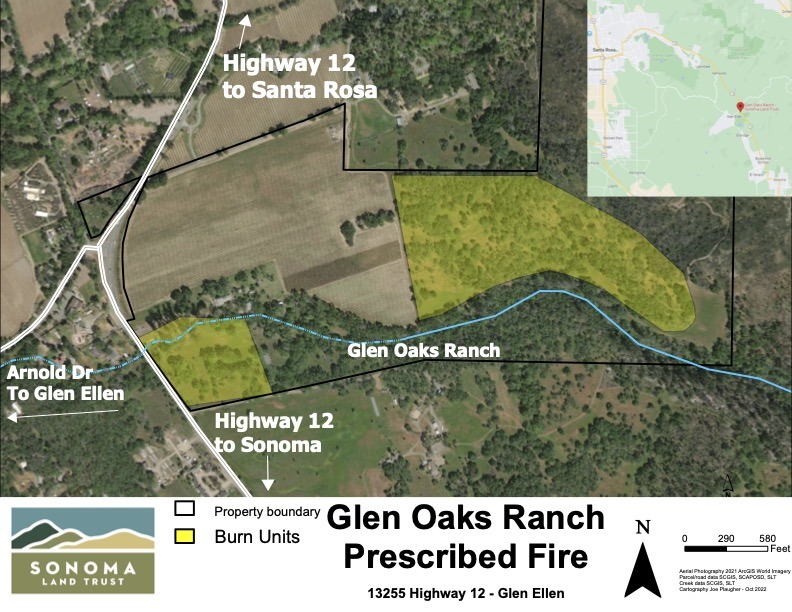
Se ha programado una quema controlada en el Rancho Glen Oaks del Sonoma Land Trust, cerca de Glen Ellen, para el jueves 10 de noviembre de 2022 a fin de restaurar la salud y la resistencia del bosque*.
| Sonoma Land TrustGina Fabiano, Directora de marketing y relaciones con los medios de comunicación 707-596-3761 móvil de trabajo gina@sonomalandtrust.org |
| All Hands Ecology Wendy Coy, Directora de comunicaciones 415-868-9244 ext. 123 / 707-829-9582 móvil wcoy@allhandsecology.org |
8 de noviembre de 2022- Glen Ellen, CA – Sonoma Land Trust y All Hands Ecology anunciaron sus planes de llevar a cabo una quema controlada de 32 acres en el Rancho Glen Oaks cerca de Glen Ellen, California, el jueves 10 de noviembre. La quema será dirigida por el programa Fire Forward de All Hands Ecology en asociación con Sonoma Land Trust para restaurar la salud del bosque y la resistencia a futuros incendios forestales. Es posible que residentes vean o huelan el humo de la zona de la quema al este de la Carretera 12 en Glen Ellen y se les aconseja no llamar al 911.
*Esta quema controlada está sujeta a cambios según las condiciones.
El Rancho Glen Oaks está ubicado en la Carretera 12, cerca de Arnold Drive en Glen Ellen. El tiempo previsto para la quema controlada es desde las 11:00 a.m. hasta las 5:00 p.m. La quema se llevará a cabo por los gestores de incendios controlados del programa Fire Forward de All Hands Ecology, con el apoyo del personal de Sonoma Land Trust, Good Fire Alliance, Sonoma Valley Wildlands Collaborative, CAL FIRE, y Sonoma Valley Fire and Rescue Authority. Las cuadrillas continuarán monitoreando el lugar durante la noche y los días siguientes para asegurarse de que el fuego haya sido extinguido por completo. Las condiciones de clima y los protocolos de seguridad son fundamentales para este esfuerzo, y el proyecto se pospondrá si por alguna razón la quema no puede llevarse a cabo de forma segura.
————-
**Aviso de humo y tránsito**
La quema controlada comenzará a las 9:00 a.m. y concluirá alrededor de las 5:00 p.m. El humo y las llamas podrán verse al este de la Carretera 12 cerca de Glen Ellen durante todo el día. Esta es una quema controlada permitida; no llame al 911.
—————
Restauración de la salud del bosque y de la resistencia a los incendios forestales en los robledales
La Reserva del Rancho Glen Oaks, de 234 acres, perteneciente a Sonoma Land Trust, está ubicada en las tierras ancestrales de los pueblos Miwok de la costa y Pomo del sur. Durante miles de años, las prácticas indígenas de gestión del fuego incluyeron el uso de incendios de baja intensidad cada pocos años en los bosques de robles para mejorar la productividad de la tierra. Esto generó un mejor cultivo de alimentos, más fibras y medicinas, así como un seguro contra los incendios forestales. La reserva es un hábitat fundamental para cientos de especies de plantas y animales autóctonos y es un eslabón importante del Corredor de Vida Silvestre del Valle de Sonoma, una red de tierras protegidas que permite a la fauna moverse entre las Mayacamas y la Montaña de Sonoma.
En el marco de este proyecto, se ha programado la quema controlada de un total de 32 acres en dos zonas. Las zonas constan de un bosque de robles con un sotobosque de hierba y arbustos dispersos. La zona se vio afectada por un incendio forestal de alta intensidad en 2017, el primero en 60 años, que dañó o mató a muchos árboles maduros.
Los bosques de robles son más saludables cuando experimentan incendios frecuentes y de baja intensidad que eliminan la maleza, las coníferas y la paja de la hierba. Sin este “buen fuego” periódico, los bosques de robles corren un mayor riesgo de sufrir daños por los incendios forestales. Sin el fuego, los combustibles se acumulan y se hacen más densos con el tiempo, lo que puede dar lugar a incendios forestales de alta intensidad.
Las quemas controladas de baja intensidad también hacen que los bosques de robles sean más sanos y resistentes al cambio climático: un buen fuego crea espacio para nuevas generaciones de plantas, aumenta la disponibilidad de nutrientes y agua, y estabiliza el carbono en el suelo. Por último, las quemas controladas pueden mejorar la seguridad de la comunidad si se realizan cerca de las comunidades o en lugares estratégicos, junto con el espacio defendible y una buena preparación.
Aprende más:
Reserva del Rancho Glen Oaks del Sonoma Land Trust: https://sonomalandtrust.org/our-preserve-system/anchor-preserves/glen-oaks-ranch/
Programa “Fire Forward” de All Hands Ecology https://www.allhandsecology.org/fire-forward/
